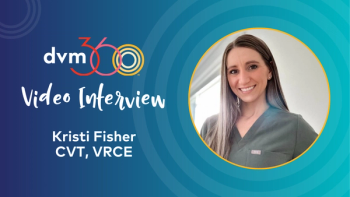
Me and my canine soul mate
How my beloved dog Chaser led me to a career in the veterinary field and a passion for preventive care.
Sometimes it’s one special pet that gets us into the veterinary field. Chaser was the one that changed my life. If it wasn’t for that rescued Brittany, I wouldn’t be writing this story. I wouldn’t be in the media talking or writing about pets. Here’s how I met her—and where our special relationship took me through the years.
Lovable but flawed
While Chaser and I instantly connected, she did have her issues. The 9-month-old country dog melted in the big city. She was terrified of loud noises, like city buses that rumbled by. She literally shook with fright at the sight of a fire hydrant.
She also had separation anxiety. Whenever we left the house, she lost house-training. In fact, whenever I closed the bathroom door to do my business, she did the same on the other side. This was before veterinary behaviorists, and before drugs and nutraceuticals were used as tools to assist dogs with this problem.
There was no one sure of behavior modification protocol back then, but several dog trainers offered wonderful ideas. My wife’s was the most original plan to deal with our dog’s separation anxiety—she blew up a picture of me, draped an old worn T-shirt around it, and played a recording of my voice. She figured if Chaser could see, smell, and hear me, she wouldn’t be so upset by my departures. It didn’t work.
I hung in there and over time Chaser underwent a Pygmalion transformation into my fair confident canine.
I had been writing about pets part-time, but when Tribune Media Services offered me the opportunity to write a syndicated newspaper column, it was Chaser who helped convince me it was the right thing to do. I felt there wasn’t enough information to help pets with behavior problems, and I wanted to encourage others to discover the joy of living day to day with a best friend with four legs. I thought the lucky ones might have a connection approaching what I had with my dog. My bond with Chaser was so apparent, strangers on the street would comment.
Serious but treatable
By now Chaser was 13 years old, but she seemed perfectly healthy. We visited the veterinarian every six months, and during one preventive care exam Dr. Sheldon Rubin in Chicago saw a growth in her inguinal area. His suspicions proved correct, Chaser had mast cell cancer.
The word cancer is itself devastating. Because we caught it early, and because we were lucky, Dr. Rubin was able to achieve excellent surgical margins.
Veterinary oncologist Dr. Barbara Kitchell at Michigan State University College of Veterinary Medicine said neither chemotherapy or radiation therapy was suggested because of just how early the diagnosis was made. She did say if I had waited even six months, or until there were symptoms, it’s likely Chaser may have become a victim to cancer.
Chaser recovered from surgery in a week, and lived more than two years in good health until the very end.
I will be forever grateful for that one veterinary visit, which gave us two more years together.
Troubled but hopeful
So, a few years ago, when John Payne, then-CEO of Banfield, told me about a coalition of industry, the American Animal Hospital Association, and the American Veterinary Medicine Association then called the Partnership for Preventive Pet Healthcare, I was ecstatic. For years I knew veterinary visits have been moving in the wrong direction. I was already speaking to veterinarians at conferences about how to market practices with preventive care in mind and talk with the public about how preventive care may save their pets’ lives—as well as save them money. I truly believe and hope that being a mouthpiece for the now-renamed) Partners for Healthy Pets (
Veterinary medicine gets better all the time and students graduate with hopes and dreams of saving lives. However, as enthusiastic or talented a veterinarian happens to be, you can’t help pets you are not seeing.
My mission: to add my voice to those who are attempting to reverse this alarming trend, and step up my conversations with pet owners about why preventive care matters.
Every time I’m speaking about preventive care, and even as I write this story, I think about those two additional years I had with my canine soul mate.
Newsletter
From exam room tips to practice management insights, get trusted veterinary news delivered straight to your inbox—subscribe to dvm360.




